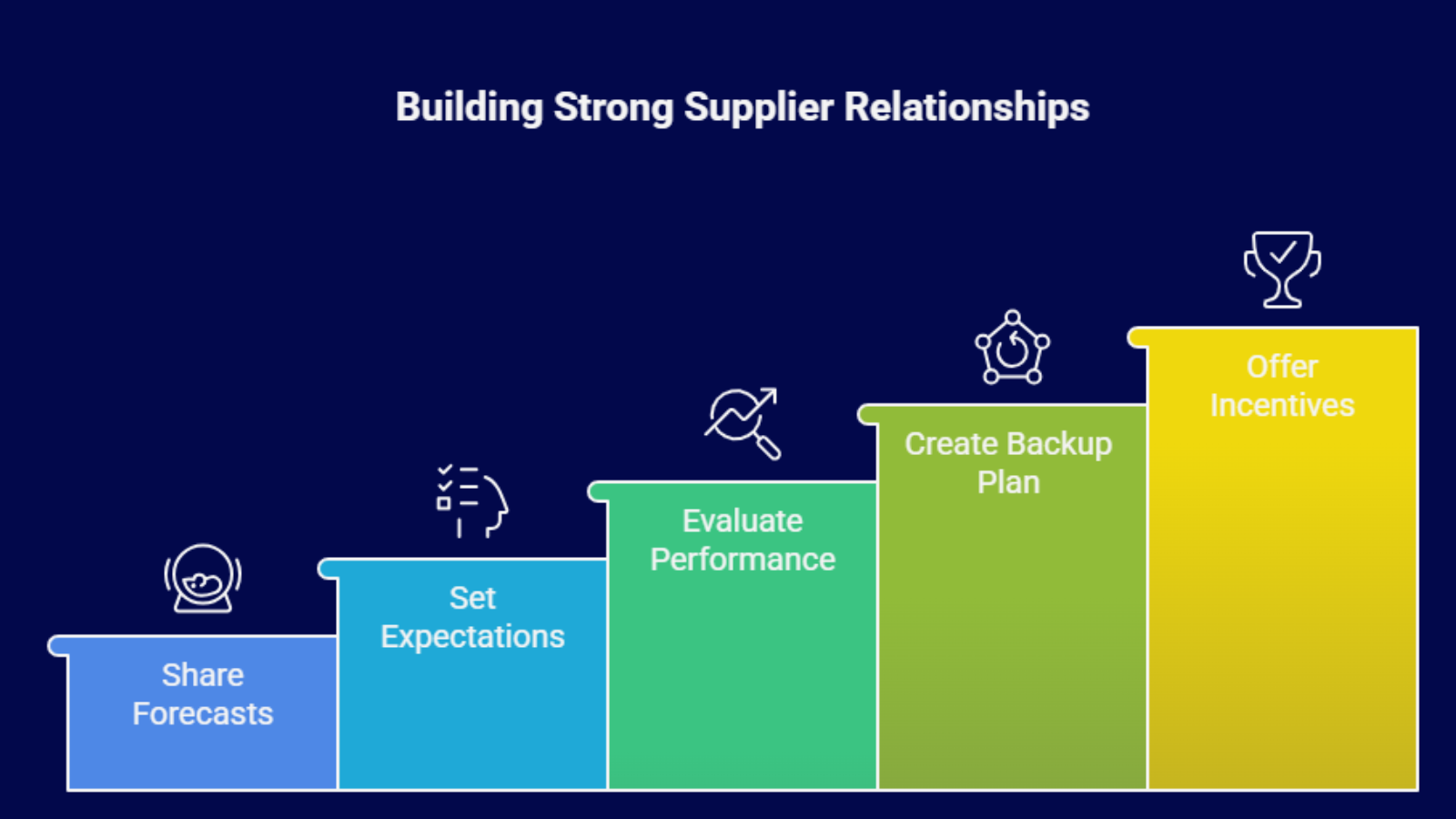
With more than 75 million active customers, Myntra has grown into India’s most trusted destination for fashion and lifestyle shopping. Unlike generic marketplaces, Myntra is built entirely around the fashion category, making it a strategic choice for brands selling apparel, footwear, accessories, and beauty products.
It attracts high-intent buyers who are looking for the latest trends, premium quality, and seasonal collections. For sellers, this means a sharper, more targeted customer base, better brand visibility through curated campaigns, and tools that support faster growth. Myntra offers rich media features like Brand Stores and Myntra Studio, a seller-friendly Smart Fulfilment model, and access to platform-wide promotions, which together create an ecosystem where fashion sellers can truly scale.
The Myntra Big Fashion Festival Sale 2025 is expected to be one of the biggest e-commerce events of the year. With over 23 lakh styles and thousands of competing brands on the platform, success during this period depends not only on having the right product but on having the right operations.
Inventory must be planned with precision, logistics must be agile, and fulfillment must be fast and error-free. This blog shares a comprehensive supply chain checklist for Myntra sellers, packed with actionable strategies to help you prepare, stay in stock, and meet the massive festive demand without compromising speed, accuracy, or customer experience.
To succeed, having trendy products and great prices is not enough. Your supply chain must be fast, reliable, and ready to scale. Below are five critical supply chain actions every Myntra fashion seller must complete to prepare for the surge.
1. Forecast Demand Accurately with Historical and Real-Time Data
Many fashion sellers on Myntra either overstock slow-moving items or run out of high-demand products during sales. This leads to lost sales, poor ratings, blocked listings, and increased holding costs. The root cause? Inaccurate demand forecasting and poor visibility into real-time trends.
The solution lies in combining historical sales data with real-time trend analysis to forecast demand more accurately. Use tools like Base.com to automate SKU-level replenishment based on sales velocity and category trends.
Monitor sell-through rates, stockout risk, and platform-specific performance to fine-tune inventory decisions. Integrate sales insights from other marketplaces like Flipkart and Amazon to spot cross-platform demand shifts. With this data-driven approach, sellers can reduce excess stock, avoid stockouts, and maintain availability of fast-moving products throughout the festive sale.
Key KPIs to Monitor
| KPI | Why It Matters |
|---|---|
| Sell-through rate | Tracks how fast inventory is moving |
| Stockout rate | Indicates missed sales due to lack of availability |
| Inventory turnover ratio | Measures how often inventory is replaced |
| Days of cover | Shows how many days current stock can support sales |
| Forecast accuracy | Reflects how closely actual sales match predictions |
Process and Impact of Accurate Forecasting
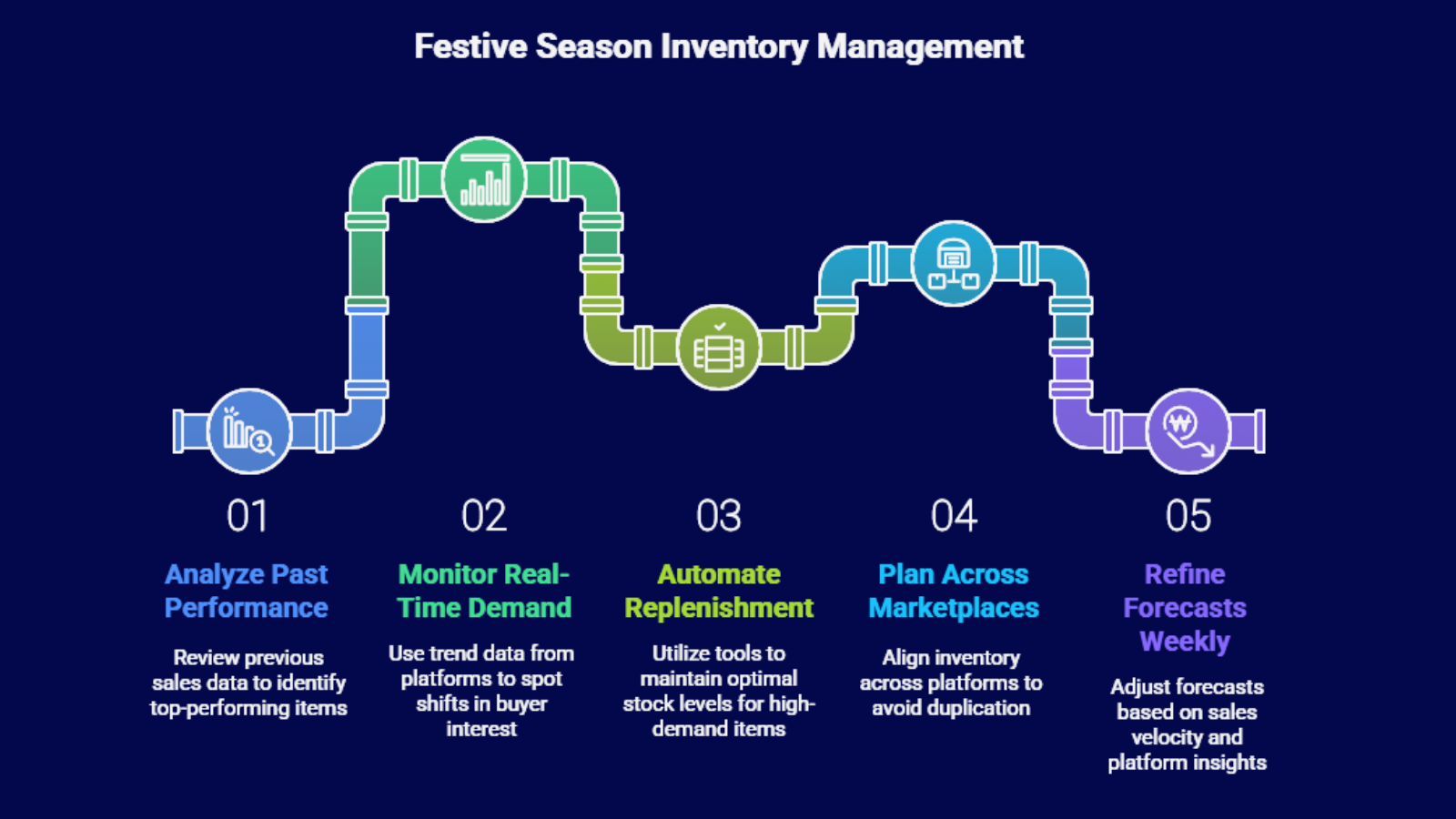
- Analyze past performance: Review previous festive season sales to identify top-performing categories and SKUs
- Monitor real-time demand signals: Use trend data from Myntra, Flipkart, Amazon, and Meesho to spot shifts in buyer interest
- Automate replenishment: Tools like Base.com help maintain the right stock levels across high-demand SKUs
- Plan across marketplaces: Align inventory across platforms to avoid duplication and identify cross-platform winning products
- Refine forecasts weekly: Adjust based on ongoing sales velocity and platform insights to stay agile during the sale
Forecasting is not just a planning function, it is a growth lever. Sellers who get this right can meet demand confidently and win big during the Myntra Big Fashion Festival Sale.
2. Centralize Inventory and Use Smart Fulfilment
Sellers often struggle with delayed deliveries, high return rates, and lost orders during festive sales due to poor inventory placement and fragmented stock visibility. Without centralized inventory and fulfillment planning, products are shipped from far-off locations, leading to longer delivery times, frustrated customers, and lower seller scores.
To solve fulfillment challenges, centralize your inventory using a multi-channel WMS and align stock placement with demand hotspots. Leverage Myntra Smart Fulfilment (PPMP) or partner with agile 3PLs to shorten delivery times and improve order accuracy. Real-time inventory sync across channels prevents overselling, while regional dispatch improves customer satisfaction. This approach reduces returns, boosts seller scores, and improves discoverability, especially crucial during the Myntra Big Fashion Festival Sale when speed and availability are directly tied to sales performance.
Key KPIs to Monitor
| KPI | Why It Matters |
|---|---|
| Order-to-ship time | Measures speed from order placement to dispatch |
| Return rate | Indicates fulfillment quality and delivery accuracy |
| Regional fulfilment accuracy | Tracks percentage of orders shipped from nearest hubs |
| Inventory sync rate | Ensures real-time stock availability across sales channels |
| Seller score | Affects ranking and exposure on Myntra during high-traffic events |
Process and Impact of Smart Fulfilment
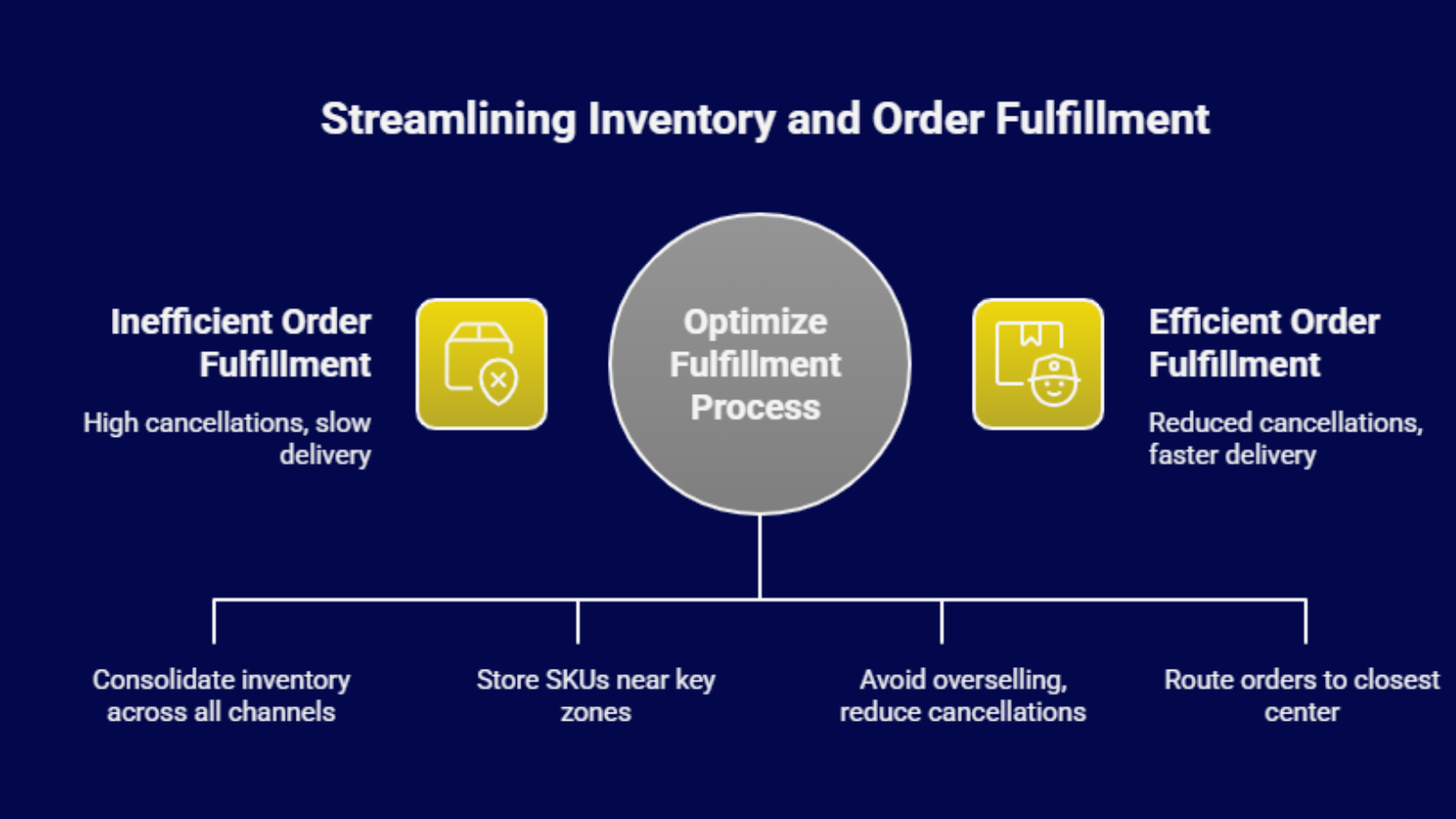
- Use a centralized WMS or tech platform to consolidate inventory data across Myntra, D2C, and other channels
- Store high-volume SKUs near key zones using Myntra’s Smart Fulfilment or partners
- Enable real-time inventory sync to avoid overselling and reduce cancellation rates
- Route orders dynamically to the closest fulfilment center to reduce delivery time
- Improve shipping SLAs and reduce returns by minimizing transit delays and customer dissatisfaction
Enable real-time inventory sync across your D2C, Myntra, and other marketplace channels to avoid overselling or delays.
3. Strengthen Last-Mile Delivery with Multi-Logistics Partnerships
In the festive season, delayed deliveries can lead to order cancellations, negative reviews, and blocked listings. Many Myntra sellers rely on a single logistics partner, which creates bottlenecks when volumes surge. Without backup options and regional coverage, sellers struggle to meet delivery SLAs, especially across Tier 2 and Tier 3 cities.
To avoid delivery delays and customer churn, sellers should work with multiple logistics partners offering broad pin code coverage and real-time tracking. Use a tech platform that auto-assigns couriers based on performance and geography. Focus on first-attempt delivery success and offer faster delivery options where feasible. This ensures consistent customer experience, reduces cancellations, and improves seller performance during high-pressure events like the Myntra Big Fashion Festival Sale. A well-planned last-mile network can be the difference between good sales and great sales
Key KPIs to Monitor
| KPI | Why It Matters |
|---|---|
| First-attempt delivery rate | Measures efficiency and success of initial delivery attempts |
| Last-mile delivery TAT | Time taken to deliver from local hub to customer |
| Pin code serviceability | Indicates geographical delivery coverage |
| Order cancellation rate | Reflects customer experience and supply reliability |
| NPS or customer satisfaction | Impacts seller reputation and future conversions |
Process and Impact of Optimizing Last-Mile Logistics
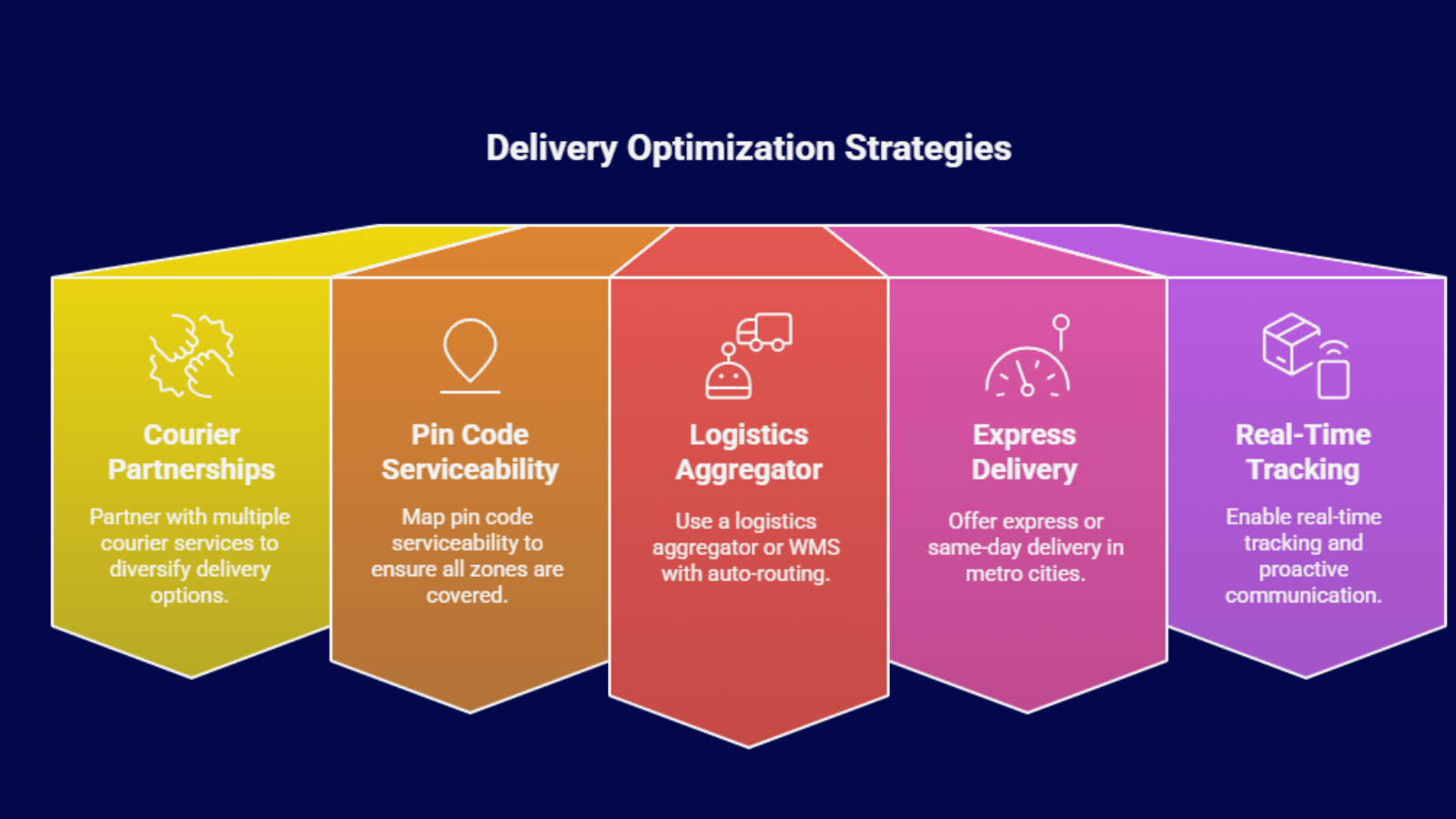
- Partner with multiple courier services to diversify delivery options
- Map pin code serviceability to ensure all zones are covered, especially in high-order states
- Use a logistics aggregator or WMS with auto-routing to assign the best courier per region
- Offer express or same-day delivery in metro cities to improve conversion
- Enable real-time tracking and proactive communication for failed delivery scenarios
You need to confirm the shipping capacity, serviceability, and turnaround time with all your courier partners at least two weeks before the sale starts to ensure they can handle the expected surge in orders without delays or disruptions.
4. Strengthen Supplier Relationships for Seamless Festive Fulfilment
Behind every high-performing Myntra storefront is a dependable supply chain. However, many sellers face breakdowns during peak sales due to misalignment with suppliers, leading to late dispatches, stock shortages, or quality issues. Strengthening supplier partnerships is critical to ensure timely delivery and smooth operations during the Myntra Big Fashion Festival Sale.
To avoid festive supply disruptions, sellers should build strong, transparent relationships with their suppliers. Share forecasts and sale timelines early, define KPIs like on-time delivery and fill rate, and review supplier performance after the sale. For Myntra sellers, where stock delays can affect visibility and seller scores, a collaborative backend can directly influence festive success. Proactive supplier planning ensures products arrive on time, in full, and in perfect condition, ready to meet soaring demand during the Big Fashion Festival Sale.
Key KPIs to Monitor
| KPI | Why It Matters |
|---|---|
| On-time delivery rate | Ensures inventory arrives ahead of sale dates |
| First-pass quality rate | Measures the percentage of items accepted without rework |
| Order responsiveness | Tracks how quickly suppliers confirm and process purchase orders |
| Lead time variability | Reflects reliability and planning predictability |
| Supplier fill rate | Shows how much of the requested inventory was fulfilled accurately |
Process and Impact of Strengthening Supplier Collaboration
- Share accurate demand forecasts and campaign plans in advance to aid supplier prep
- Set clear service-level expectations on delivery, quality, and packaging
- Evaluate suppliers post-sale using structured KPIs to identify reliable partners
- Create a backup supplier plan for your top-performing SKUs to avoid last-minute disruptions
- Offer incentives for high performance such as faster payments or preferred order volumes
Sellers need to set performance benchmarks like on-time delivery, quality accuracy, and order responsiveness to evaluate suppliers post-sale.
5. Enhance Customer Experience Through Tech and Communication
In a high-traffic sale like Myntra’s Big Fashion Festival, customer experience becomes a key differentiator. Late updates, missing tracking links, or unresolved queries can damage your seller rating and limit visibility in Myntra’s algorithm. Automation and proactive communication ensure smooth post-purchase journeys and build long-term trust.
Many sellers experience a spike in returns and negative reviews during festive sales, not always because of product quality, but due to poor post-order communication, missing updates, and delivery uncertainties.
Customer experience during festive sales can make or break your Myntra performance. Use tech tools to automate real-time updates, order tracking, and proactive delay notifications. Set up a responsive helpdesk to reduce wait times and resolve buyer issues quickly. These actions improve seller scores, reduce returns, and boost repeat orders. On Myntra, where platform visibility is partially algorithm-driven, good CX translates directly to higher search rankings and conversion during key sale events like the Big Fashion Festival.
Key KPIs to Monitor
| KPI | Why It Matters |
|---|---|
| Order tracking click rate | Measures how actively customers follow their order status |
| Return reason code frequency | Highlights issues like “delayed delivery” or “not informed” |
| Customer support ticket volume | Reflects gaps in communication and order experience |
| Seller score | Impacts visibility and ranking on Myntra during sales |
| Repeat purchase rate | Shows how well customer experience drives retention |
Process and Impact of Improving Customer Experience
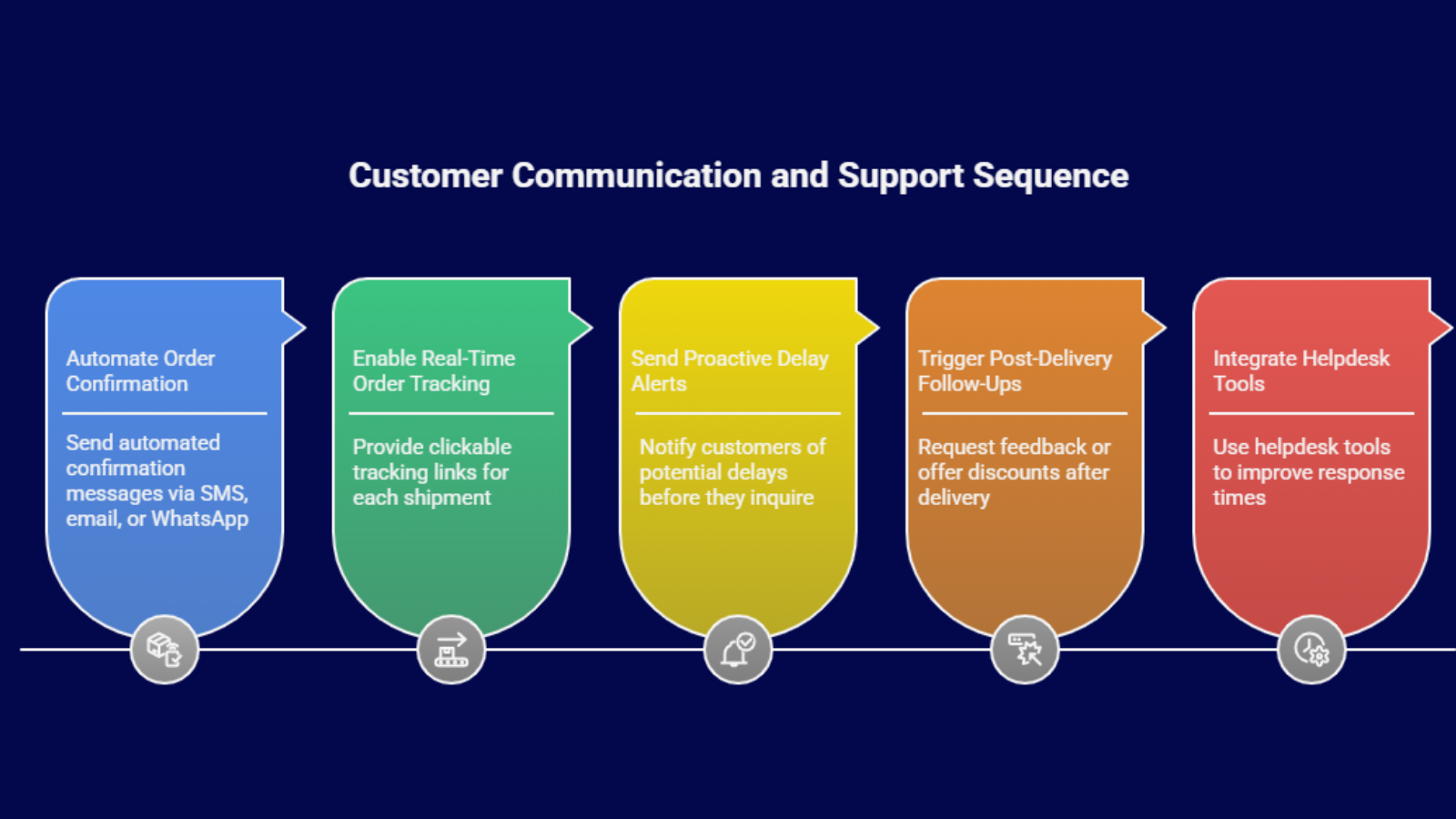
- Automate order confirmation and shipping updates through SMS, email, or WhatsApp
- Enable real-time order tracking with clickable tracking links for every shipment
- Send proactive delay alerts before the buyer has to ask
- Trigger post-delivery follow-ups asking for feedback or offering discounts on next purchase
- Integrate helpdesk tools to reduce response time on returns or queries
Sellers need to integrate return quality control tools that auto-capture product condition to reduce claims rejections and improve NPS.
Final Thoughts
The Myntra Big Fashion Festival Sale runs on backend speed and accuracy. Without automation, sellers risk delays, stockouts, and lost visibility. Base.com offers a complete solution, real-time inventory sync, smart fulfilment, multi-courier integration, and automated customer communication – all from one dashboard. For D2C and marketplace sellers aiming to scale during the festive rush, Base.com is the edge you need to stay ahead, deliver faster, and grow smarter.
Click Here to Simplify Festive Inventory Planning with Base.com.
Frequently Asked Questions
1. When does the Myntra Big Fashion Festival 2025 start?
The Myntra Big Fashion Festival 2025 is expected to start around September 26. Sellers should be ready at least two weeks in advance with inventory, fulfillment, and listings updated to handle early access and increased traffic across categories like fashion, beauty, and accessories.
2. Does Myntra store seller inventory?
Yes, Myntra offers a Smart Fulfilment model where sellers can store inventory in partner warehouses. This enables faster delivery, better visibility, and higher conversion rates. Alternatively, sellers can manage inventory independently under the marketplace model, though Myntra prioritises sellers using Smart Fulfilment during big events.
3. What should sellers do to prepare for the Myntra Big Fashion Festival?
Sellers should forecast demand, optimize catalogues with festive keywords and imagery, and stock top SKUs near high-demand zones. Automation tools for inventory sync, real-time tracking, and multi-courier shipping are essential. Strong supplier alignment and fulfilment readiness directly boost rankings and sales performance during the event.
